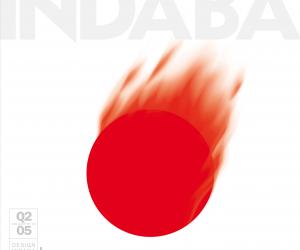First Published in
It helped, of course, that his father ran a printing company and that the family lived next door. As a five year-old, he would sneak into the factory and nag his father to run out some stickers for him. "I just found printing really magical," he says.
As a teenager in Hyogo-ken, Japan, Kitagawa was already designing packaging for a fishing equipment company which is still in use today. On graduating from Tsukuba University, he was expected to return to the family business - the Kitagawa Printing Company - started by his great grandfather, but Kitagawa had one condition. He wanted to marry design with production, creating a business that could handle everything from brief to delivery. And one other thing - he wanted to change the name of the company to reflect this new positioning. Henceforth it would be known as "Graph".
That was 16 years ago. Since then, Kitagawa has forged a reputation as one of Japan's leading young graphic designers. When asked how many designers work at Graph he replies "We are all designers: the people who do the pre-press, the machine minders, they are all designers to me, they are all creative."
His work is rooted, unsurprisingly, in an acute sensitivity toward materials and a deep understanding of print processes. For an art text book, Kitagawa used a reflective material normally used for emergency services clothing for the binding: not only did it make the book look far cooler than a normal text book (important in Japan where young people rarely want to be seen carrying school books), but it also ensured that this would be the one book that would stand out on the shelf as the store lights hit it. A similar appreciation of marketing informs his design for Sherbet Street, a book of paintings by Japanese pop star Kenichi Asai. Kitagawa opted to package the book in bubble wrap, vastly increasing the bulk so that only a few copies would make an impressively tall and intriguing pile in-store.
Though firmly wedded to the industrial process of printing, Kitagawa strives to inject some individuality into this work. He prefers, for instance, to use an old press at his factory as it allows him to play with different effects, whereas his high-tech new one is extremely precise. Often he will alter a job on press so that not all copies look the same. Similarly, in a calendar for Idea magazine, he set the type by hand so that spaces between characters varied, giving it a handmade feel - something Kitagawa refers to as introducing "noise" to the work. "Think of it like nature," he says. "Nature looks chaotic but, it has its own system."
Kitagawa didn't attend a specialist art college. Instead, his university allowed him to study a breadth of subjects including neurology and psychology. Thus, he feels, his may be a different creative process to most Japanese designers. Certainly he does not feel part of any Japanese graphics scene - his wife Juri, also a director of Graph, refers to him as "the hermit".
An abiding theme among Western designers is the sense that Japanese clients are far more receptive to adventurous design than their European or American counterparts: many designers say that they do their best work in Japan. Kitagawa acknowledges that the Japanese have a history of appreciation of fine paper and print as well as an eye for beautiful packaging, which is an extension of their desire for good service from retailers, but he feels that Western designers may be getting a skewed impression of the average Japanese client. "Because of the war, we have a complex about, or admiration for, the West - as well as a desire to become like them. If you have a Western designer, it is assumed that they will do good work. It is difficult for a Japanese client to know whether it is good or bad, so, usually, they just accept the work without criticism."
Kitagawa wants to get away from this sense of cultural cringe. He uses a lot of traditional Chinese lettering (the first written language used in Japan) or Hiragana, the alphabet that had developed out of those original Chinese characters by the tenth century, and hardly any Roman lettering. Just as a younger South African generation is seeking to understand its identity through an investigation of its history, so he hopes that the Japanese can rediscover some of their own traditions instead of constantly looking to the West.
Certainly, Western designers have long looked to Japan for inspiration. Kitagawa thinks that the kind of cultural appropriation practised by The Designers Republic in the early 1990s, whereby pseudo-Japanese iconography was restyled and sold back to the kids of Tokyo "is great. It shouldn't be taboo to copy," he says. "After all, Japan is just a copy of China."




















